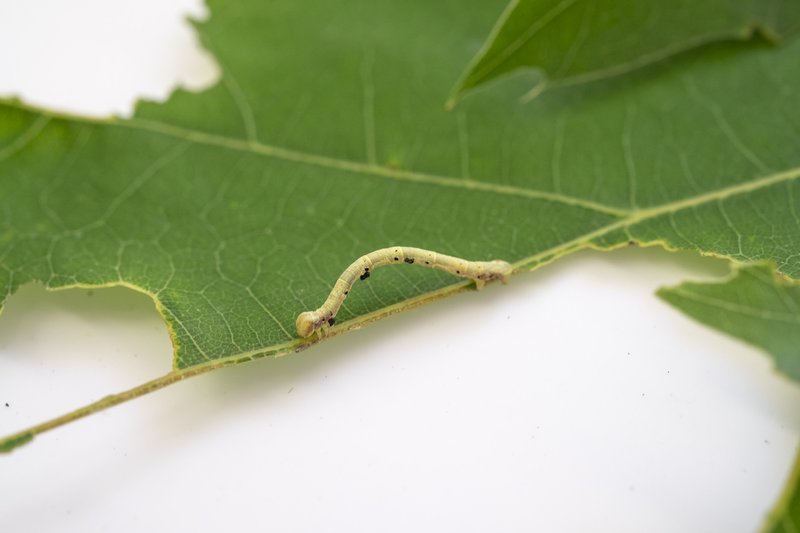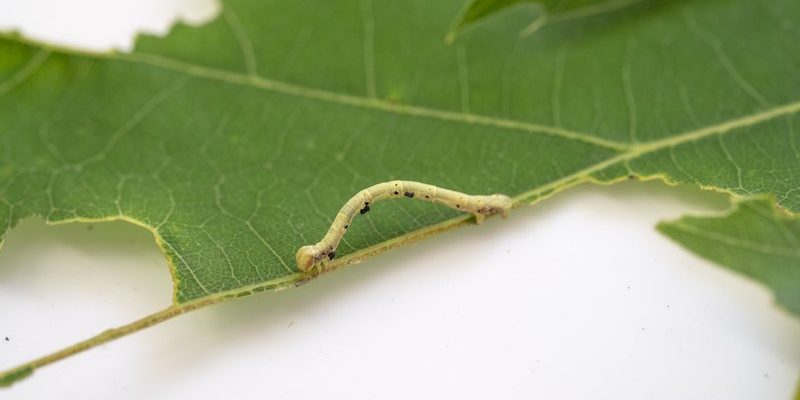
Think of inchworm droppings like tiny clues left behind at a crime scene. They’re evidence of a munching party that’s happening on your beloved plants. So, how do you identify these droppings and what do they mean for your garden? Let’s dig into this topic, making it simple and fun, just like chatting with a friend over coffee.
What Are Inchworms?
Before we dive into their droppings, let’s get familiar with these little guys. Inchworms are caterpillars that belong to the Geometridae family. They’re known for their unique way of moving, which resembles measuring or inching along—hence the name “inchworm.” You might notice them hanging out on the leaves of your plants, blending in with the greenery.
Here’s the thing: they can cause quite a bit of damage if there are too many of them munching away at your garden. They feed on leaves, and you really don’t want them turning your lush garden into a barren land. So, knowing how to spot them—and their droppings—can help you take action before things get out of hand.
Characteristics of Inchworm Droppings
Inchworm droppings are usually small, dark, and cylindrical, resembling tiny black or brown pellets. They might remind you of miniature rice grains or even small coffee grounds. Just imagine a tiny chocolate chip cookie that’s been crumbled up. That’s kind of what you’re looking for!
When you find these droppings on your leaves, take note of their quantity. If you see a lot of them, it’s a sign that those inchworms are having a feast! You can often find these droppings underneath the leaves or on the leaf surface itself. The more droppings you find, the more likely it is that an inchworm infestation is lurking nearby.
Where to Look for Inchworm Droppings
Now that you know what to look for, let’s talk about where to find these droppings. **Inchworms are sneaky**; they often hide on the undersides of leaves or in the nooks and crannies of your plants. This means you’ll have to do a little detective work.
Start by examining the leaves of plants that seem to be suffering. Look closely at both sides of the leaves and also check the stems. If the edges of the leaves look chewed or ragged, it’s a big clue that inchworms could be nearby. Keep a close eye on your favorite plants, especially during their active feeding seasons, which usually occurs in late spring to early summer.
How to Confirm the Presence of Inchworms
Besides spotting their droppings, how can you confirm if those inchworms are indeed the culprits? One easy method is to gently shake the affected plant or branch. If you see any tiny green, brown, or even camouflaged caterpillars drop out, you’ve got your inchworms.
Additionally, look for any silk webbing. Inchworms may spin silk threads to navigate between leaves. If you see this, it’s a sure sign of their presence. Honestly, once you start looking for these signs, you’ll feel like a gardening detective!
What to Do About Inchworms
If you identify inchworm droppings and confirm their presence, it’s time to take action. There are a few options to manage these little munchers:
- Handpicking: If your garden isn’t too large, consider manually removing the inchworms. Just wear gloves and gently pluck them off your plants. Dispose of them in a bucket of soapy water.
- Natural Predators: Encourage birds and beneficial insects like ladybugs to visit your garden. They love munching on inchworms!
- Insecticidal Soap: If the infestation is severe, you might want to use insecticidal soap. It’s effective and usually safe for most plants.
Remember, before applying any treatments, check that they’re safe for your specific plants. Protecting your garden is vital, but you don’t want to harm your beloved plants in the process.
Preventing Future Inchworm Issues
Once you’ve dealt with the inchworm situation, you’ll likely want to prevent it from happening again. One way to do this is by regularly checking your plants, especially during the spring and summer. Catching issues early makes a big difference!
Another strategy is to keep your garden healthy. Healthy plants are less susceptible to pests. Make sure you’re watering correctly, providing adequate sunlight, and feeding your plants as needed. When your plants are happy, they’ll stand a better chance against hungry inchworms.
Additionally, consider using row covers when you notice inchworms tend to be active. This creates a barrier, helping to prevent them from getting to your plants.
Identifying inchworm droppings on leaves isn’t just about spotting some weird little pellets; it’s a crucial step in understanding your garden’s health. By paying attention to these signs, you can catch potential issues early and protect your plants from damage.
Whether you choose to handpick, invite nature’s helpers, or use a little chemical assistance, be proactive. With a bit of dedication and knowledge, you can keep those inchworms at bay and enjoy a thriving garden. So next time you see those droppings, remember: you’re not just facing a minor nuisance but an opportunity to nurture your garden and learn more about its ecosystem. Happy gardening!

